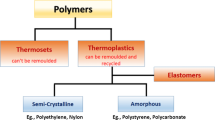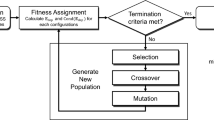Abstract
The aim of this study was to determine the attenuation of gamma and X-rays with different energies caused by passage through different materials. To this end, different materials with a range of atomic numbers were chosen to measure gamma and X-ray attenuation coefficients and to explore the mechanisms of interaction of gamma and X-rays with matter of various kinds. It is shown that the attenuation coefficients first decrease and then increase with increase in the radiation (photon) energy. The attenuation of gamma and X-rays passing through materials with high atomic number is greater than that in materials with low atomic number. The attenuation minimum is related to the atomic number of the irradiated materials. The larger the atomic number is, the lower the energy corresponding to attenuation minimum is. Photoelectric and Compton effects are the main processes when gamma rays pass through individual materials with high and low atomic numbers, respectively. Therefore, for radiotherapy and radiation protection, different methods should be considered and selected for the use of gamma and X-rays of different energies for use in different materials.






Similar content being viewed by others
References
S.Z. Luo, Application of Nuclear Technology (Harbin Engineering University Press, Harbin, 2009). (in Chinese)
M.D. Bethesda, Structural shielding design for medical imaging X-ray facilities. Phys. Med. Biol. 50, 4243–4244 (2005). https://doi.org/10.1088//0031-9155/50/17/B01
K.P. Adhikari, A medical physics perspective: radiation therapy in Nepal. Med. Phys. Int. J. 6, 145–147 (2018)
E. Rosenblatt, Planning national radiotherapy services. Front. Oncol. (2014). https://doi.org/10.3389/fonc.2014.00315
A.W. Lightstone, S.H. Benedict, F.J. Bova et al., Intracranial stereotactic positioning systems: report of the American Association of Physicists in Medicine Radiation Therapy Committee Task Group No. 68. Med. Phys. 32, 2380–2398 (2005). https://doi.org/10.1118/1.1945347
A.A. El-Sayed, M.A. El-Sarraf, F.A. Gaber, Utilization of ilmenite/epoxy composite for neutrons and gamma rays attenuation. Ann. Nucl. Energy 30, 175–187 (2003). https://doi.org/10.1016/s0306-4549(02)00052-X
R. Allen, S.C. Edwards, The repair of concrete structures. Cem. Concrete Assoc. 22, 125–138 (1987). https://doi.org/10.1080/00218468708074996
H.S. Hu, Q.S. Wang, J. Qin et al., Study on composite material for shielding mixed neutron and \(\gamma\)-rays. IEEE Trans. Nucl. Sci. 55, 2376–2384 (2008). https://doi.org/10.1109/TNS.2008.2000800
S. Kaur, K.J. Singh, Investigation of lead borate glasses doped with aluminum oxide as gamma ray shielding materials. Ann. Nucl. Energy 63, 350–354 (2014). https://doi.org/10.1016/j.anucene.2013.08.012
M. Kozlovska, R. Cerny, P. Otahal, Attenuation of X and gamma rays in personal radiation shielding protective clothing. Radiat. Saf. J. 109, S205–S211 (2015). https://doi.org/10.1097/HP.0000000000000361
K. Vance, A. Ozer, A. Salahuddin, H. Sabbi, Dosimetric comparison of intracranial metastasis treatment using two radiosurgery systems: TrueBeam STx with VMAT and Gamma Knife Model 4C. J. Radiosurg. SBRT 4, 235–243 (2016)
L.S. Chin, S. DiBiase, Radiation necrosis following gamma knife surgery: a case-controlled comparison of treatment parameters and long-term clinical follow up. J. Neurosurg. 94, 899–904 (2001). https://doi.org/10.3171/jns.2001.94.6.0899
G. Kragl, S. AfWetterstedt, B. Knäusl et al., Dosimetric characteristics of 6 and 10 MV un-attened photon beams. Radiother. Oncol. 93, 141–146 (2009). https://doi.org/10.1016/j.radonc.2009.06.008
U. Titt, O.N. Vassiliev, F. Pönisch, L. Dong, H. Liu, R. Mohan, A flattening filter free photon treatment concept evaluation with Monte Carlo. Med. Phys. 33, 1595–1602 (2006). https://doi.org/10.1118/1.2198327
Q.S. Zheng, G.Y. Yu, X. He, M. Jiang, X.F. Chu, S.Y. Zhao, S.J. Fan, P.X. Liu, Protective effect of S-isopentenyl-L-cysteine against DNA damage in irradiated mice. Acta Acad. Med. Sin. 37, 496–500 (2018). https://doi.org/10.3881/j.issn.1000-503X.2015.05.002
M.I. Koukourakis, D. Pitsiava, A. Giatromanolaki et al., Amifostine-related fever-rash during fractionated radiotherapy: diagnostic and predictive role of C-reactive protein. Am. J. Clin. Oncol. 34, 281–285 (2011). https://doi.org/10.1097/COC.0b013e3181dea7bd
X.H. Li, Radiation Radiology and Protection (Atomic Energy Press, Beijing, 1980), pp. 17–23
R.D. Evans, Energy dependence of the various gamma-ray interaction processes in sodium iodide, in The Atomic Nucleus, ed. by R.D. Evans (the McGraw-Hill Book Company, New York, 1955)
X.T. Lu, D.X. Jiang, Y.L. Ye, Nuclear Physics, vol. 63 (Atomic Energy Press, Beijing, 2000)
J.I. Byun, J.Y. Yun, A calibration transmission method to determine the gamma-ray linear attenuation coefficient without a collimator. Appl. Radiat. Isot. 102, 70–73 (2015). https://doi.org/10.1016/j.apradiso.2015.05.006
B.S. Sidhu, A.S. Dhaliwal, K.S. Mann, K.S. Kahlon, Simplified two media method: a modified approach for measuring linear attenuation coefficient of odd shaped archaeological samples of unknown thickness. Appl. Radiat. Isot. 69, 1516–1520 (2011). https://doi.org/10.1016/j.apradiso.2011.06.007
J. Van Dyk, Broad beam attenuation of cobalt-60 gamma rays and 6-, 18-, and 25-MV X-rays by lead. Med. Phys. 13, 105–110 (1986). https://doi.org/10.1118/1.595929
A.M. Zoulfakar, A.M. Abdel-Ghany, T.Z. Abou-Elnasr, A.G. Mostafa, S.M. Salem, H.H. El-Bahnaswy, Effect of antimony-oxide on the shielding properties of some sodium–boro silicate glasses. Appl. Radiat. Isot. 127, 269–274 (2017). https://doi.org/10.1016/j.apradiso.2017.05.007
M.F.M. Yusof, P.N.K. Abd Hamid, Abd.A. Tajuddin, R.H.S. Bauk, N.M. Isa, M.J.Md. Isa. Mass attenuation coefficient of tannin-added Rhizophora spp. particleboards at 16.59–25.56 keV photons, and 137Cs and 60Co gamma energies. Radiol. Phys. Technol. 10, 331–339 (2017). https://doi.org/10.1007/s12194-017-0408-3
B. Mavi, F. Gurbuz, H. Ciftci, I. Akkurt, Shielding property of natural biomass against gamma rays. Int. J. Phytorem. 16, 247–256 (2014). https://doi.org/10.1080/15226514.2013.773276
P. Kaur, K.J. Singh, S. Thakur, P. Singh, B.S. Bajwa, Investigation of bismuth borate glass system modified with barium for structural and gamma-ray shielding properties. Spectrochim. Acta Part A Mol. Biomol. Spectrosc. 206, 367–377 (2018). https://doi.org/10.1016/j.saa.2018.08.038
H.C. Manjunatha, L. Seenappa, B.M. Chandrika, K.N. Sridhar, Gamma, X-ray and neutron shielding parameters for the Al-based glassy alloys. Appl. Radiat. Isot. 139, 187–194 (2018). https://doi.org/10.1016/j.apradiso.2018.05.014
K.S. Mann, J. Singla, V. Kumar, G.S. Sidhu, Verification of some building materials as gamma-ray shielding. Radiat. Prot. Dosim. 151, 183–195 (2012). https://doi.org/10.1093/rpd/ncr455
N. Damla, H. Baltas, A. Celik, E. Kiris, U. Cevik, Calculation of radiation attenuation coefficient, effective atomic numbers and electron densities for some building materials. Radiat. Prot. Dosim. 150, 541–549 (2012). https://doi.org/10.1093/rpd/ncr432
M.S. Al-Masri, M. Hasan, A. Al-Hamwi, Y. Amin, A.W. Doubal, Mass attenuation coefficients of soil and sediment samples using gamma energies from 46.5 to 1332 keV. J. Environ. Radioactiv. 116, 28–33 (2013). https://doi.org/10.1016/j.jenvrad.2012.09.008
D. Demir, A. Ün, M. Özgül, Y. Sahin, Determination of photon attenuation coefficient, porosity and field capacity of soil by gamma-ray transmission for 60, 356 and 662 keV gamma rays. Appl. Radiat. Isot. 66, 1834–1837 (2008). https://doi.org/10.1016/j.apradiso.2008.04.023
S. Ghosh, M.K. Das, Attenuation coefficients and absorbed gamma radiation energy of different varieties of potato, mango and prawn at different storage time and physiological condition. Food Chem. 145, 694–700 (2014). https://doi.org/10.1016/j.foodchem.2013.08.080
F. Glenn, Knoll, Radiation Detection and Measurement, 3rd edn. (Wiley, New York, 2000), pp. 308–312
S. Agostinelli, J. Allison, K. Amako et al., Geant4-simulation toolkit. Nucl. Instrum. Methods Phys. Res. A 506, 250–303 (2003). https://doi.org/10.1016/S0168-9002(03)01368-8
Author information
Authors and Affiliations
Corresponding author
Additional information
This work was supported by the National Natural Science Foundation of China (Nos. 11475013, 11975040 and U1832130).
Rights and permissions
About this article
Cite this article
Su, XD., Zhang, GL., Xu, SP. et al. Attenuation coefficients of gamma and X-rays passing through six materials. NUCL SCI TECH 31, 3 (2020). https://doi.org/10.1007/s41365-019-0717-9
Received:
Revised:
Accepted:
Published:
DOI: https://doi.org/10.1007/s41365-019-0717-9




